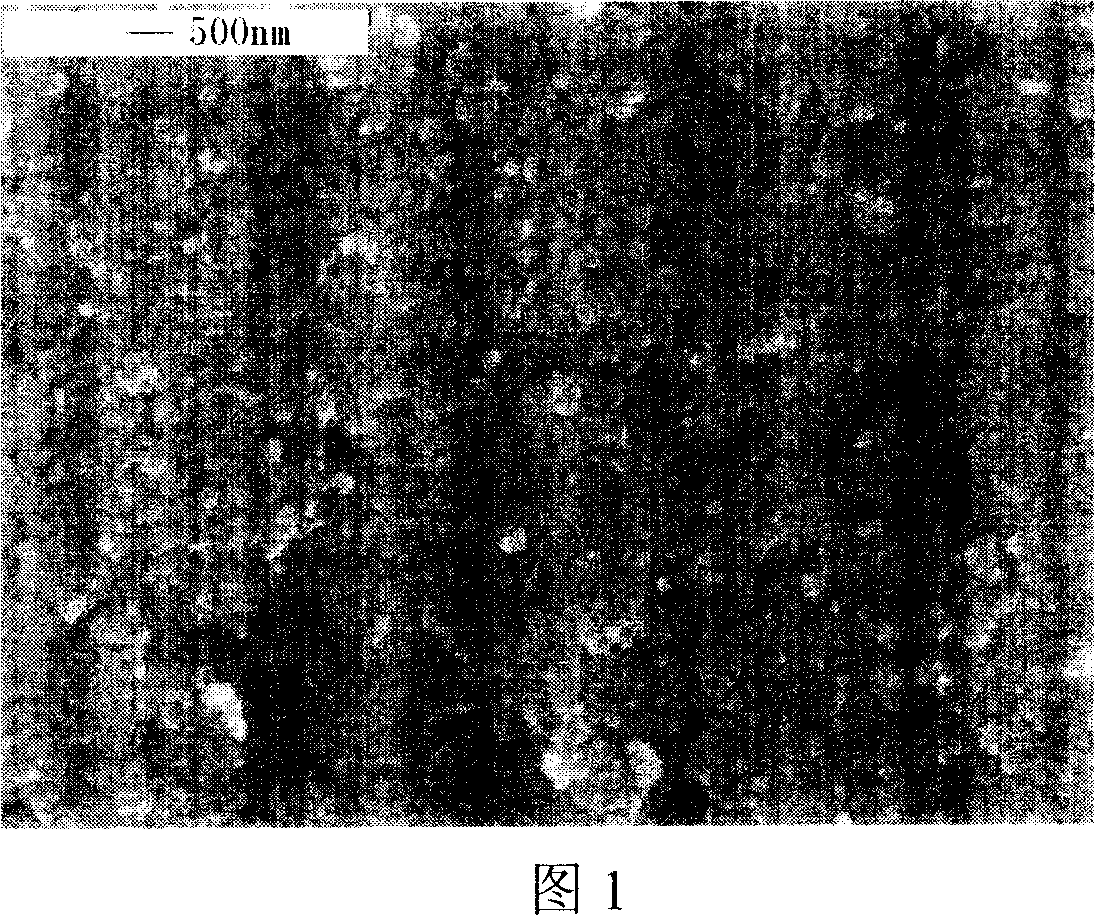Method for preparing catalyst composition
A technology of catalysts and compositions, applied in chemical instruments and methods, physical/chemical process catalysts, chemical/physical processes, etc., can solve the problems of no active metal coordination effect, poor interaction catalyst strength, and high catalyst metal content
- Summary
- Abstract
- Description
- Claims
- Application Information
AI Technical Summary
Problems solved by technology
Method used
Image
Examples
preparation example Construction
[0019] The invention provides the preparation method of catalyst, a kind of concrete process step is as follows:
[0020] 1. Ni x W y o z Complex oxide precursors and MoO 3 Preparation of the mixture
[0021] Add the salt mixture containing active metal Ni and W components into the reaction tank according to the ratio of catalyst components. Nickel-containing salts can be nickel sulfate, nickel nitrate, nickel chloride, basic nickel carbonate and the like. The tungsten-containing salt can be sodium tungstate, ammonium metatungstate, tungstic acid, etc. After mixing evenly, add concentrated ammonia water to the above mixture under stirring until dark blue material A is formed, and the pH value of material A is 10.0-13.0. The weight concentration of ammonia water is generally 15% to 35%. Heat the solution A to 80-100°C while stirring, distill ammonia and produce precipitation until the pH value of the slurry is 7.5-9.0. The precipitate in the slurry is Ni x W y o z Pr...
Embodiment 1
[0034] Add 1000mL of water into the reaction tank, then add 40g of nickel chloride to dissolve, then add 32g of ammonium metatungstate to dissolve, then add 25% ammonia water until a dark blue solution A is formed, the pH value of the solution is 11.0, and the temperature of solution A is raised to 80°C , distill ammonia for 2 hours, the pH value is 8.0, then filter, add 600ml of clean water, 28g of molybdenum trioxide and 34g of aluminum hydroxide to the filter cake, beat and stir evenly, filter, dry the filter cake at 80°C for 5 hours, and then extrude , washed three times with clean water, dried the wet strip at 120°C for 5 hours, and calcined at 500°C for 4 hours to obtain the final catalyst A. The composition and main properties are shown in Table 2.
Embodiment 2
[0036] According to the method of Example 1, according to the component content ratio of catalyst B in Table 2, add aluminum chloride, nickel chloride, sodium tungstate and zirconium oxychloride to the reaction tank, and then add 20% ammonia water to form dark blue solution, the pH value is 12.0, warming up to 95°C, distilling ammonia for 3 hours until the pH value is 7.5, then filtering, washing the filter cake twice with 500mL clean water, adding clean water and molybdenum trioxide, beating and stirring evenly, filtering, filtering The cake was dried at 70°C for 7 hours, then extruded into strips, washed twice with clean water, dried at 100°C for 8 hours, and calcined at 550°C for 3 hours to obtain the final catalyst B. The composition and main properties are shown in Table 2.
PUM
| Property | Measurement | Unit |
|---|---|---|
| specific surface area | aaaaa | aaaaa |
| diameter | aaaaa | aaaaa |
Abstract
Description
Claims
Application Information
 Login to View More
Login to View More - R&D Engineer
- R&D Manager
- IP Professional
- Industry Leading Data Capabilities
- Powerful AI technology
- Patent DNA Extraction
Browse by: Latest US Patents, China's latest patents, Technical Efficacy Thesaurus, Application Domain, Technology Topic, Popular Technical Reports.
© 2024 PatSnap. All rights reserved.Legal|Privacy policy|Modern Slavery Act Transparency Statement|Sitemap|About US| Contact US: help@patsnap.com








